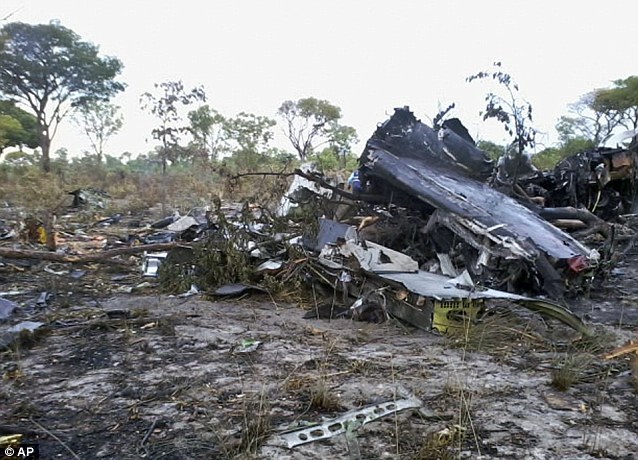- Herminio dos Santos Fernandes sent plane into descent when co-pilot was in the toilet
- Repeated banging on cock-pit door can be heard on black box recordings
- Officials claim the pilot 'intended' to cause accident that killed 33 people
Herminio dos Santos Fernandes sent the Mozambican Airlines plane in a rapid descent from 38,000 feet while his co-pilot was in the toilet.
Repeated banging on the cockpit door can be heard on recordings from the recovered black box. It isn't known if the banging was from the co-pilot or passengers.

The plane was bound for Angola with six crew members and 27 passengers when it went down on November 29 in a Namibian national park.
'There was an intention to crash the plane,' Joao Abreu, chairman of the Mozambican Civil Aviation Institute said after analysing cockpit recordings.
The pilot's motives are not known, and investigations will continue, he said.
Radar data showed that, at an obligatory reporting position over northern Botswana, the plane suddenly started to slow downwards rapidly.
The plane's movements were normal before that, with no mechanical functions, he said.
The altitude selector was then manually altered three times, bringing the plane's altitude down from 38,000 feet to 592 feet, Abreu said, reading the preliminary report to reporters.
Low and high intensity alarm signals can be heard on recovered recordings from the plane, along with the sounds of repeated banging on the cockpit door, he said.
The investigation report does not say who was banging, but Abreu said that the co-pilot was not in the cockpit at the time of the crash and not responsible for the crash.
The 'black box' flight recorders were recovered intact and sent to the United States National Transport Safety Board in Washington to be decoded and transcribed.
Other indicators show manual operations were used, he said, adding that 'all these operations required detailed knowledge of the plane's controls, and showed a clear intention to crash the aircraft.'
The control tower had lost voice and radar contact and set search operations in motion. The wreckage of the plane was found in the following days.



Reader Comments